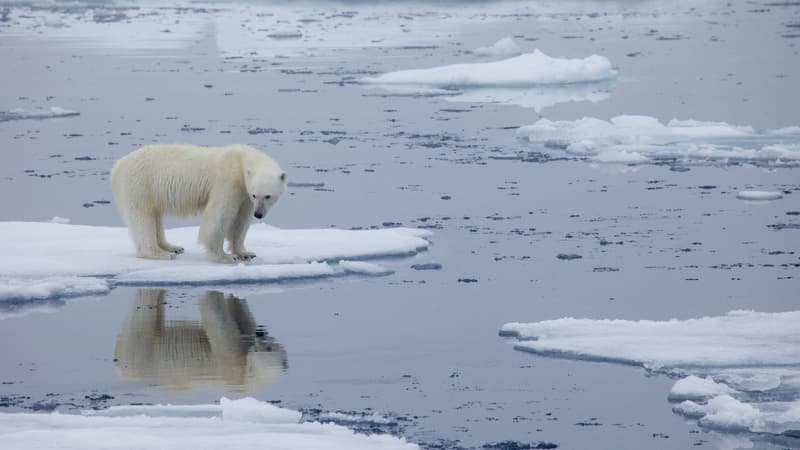Polar bears in western Hudson Bay in northern Canada are rapidly disappearing, according to a recent government study.
The researchers counted 194 bears from late August to early September 2021, as they flew over the Churchill region, a town at the gates of the Arctic in the Canadian province of Manitoba that calls itself the “polar bear capital.” . From this census, they estimated that there were 618 polar bears in the area.
The previous census conducted in 2016 estimated that there were 842 polar bears in this region.
“Comparison with 2011 and 2016 aerial survey estimates suggests that the abundance of the western Hudson Bay population may be declining,” the study concludes.
Females and cubs, main victims
The researchers note that females and cubs have been particularly affected by this decline.
They indicate that they cannot confirm with certainty the reasons for this drop. And mention in particular, as possible factors, the displacement of the animal to neighboring regions or even hunting.
“The observed declines are consistent with long-standing predictions about the demographic effects of climate change on polar bears,” they noted.
Bears rely on ice to feed seals, move around, and reproduce.
But in the Arctic, global warming is up to four times faster than in other parts of the world, according to the most recent studies.
Little by little, the ice pack, habitat of the polar bear, is disappearing. Since the 1980s, sea ice has shrunk by nearly 50% in summer, according to the National Snow and Ice Data Center.
According to a report published in Nature Climate Change in 2020, this could mean the virtual extinction of this emblematic animal: there were 1,200 individuals in the 1980s.
Source: BFM TV


